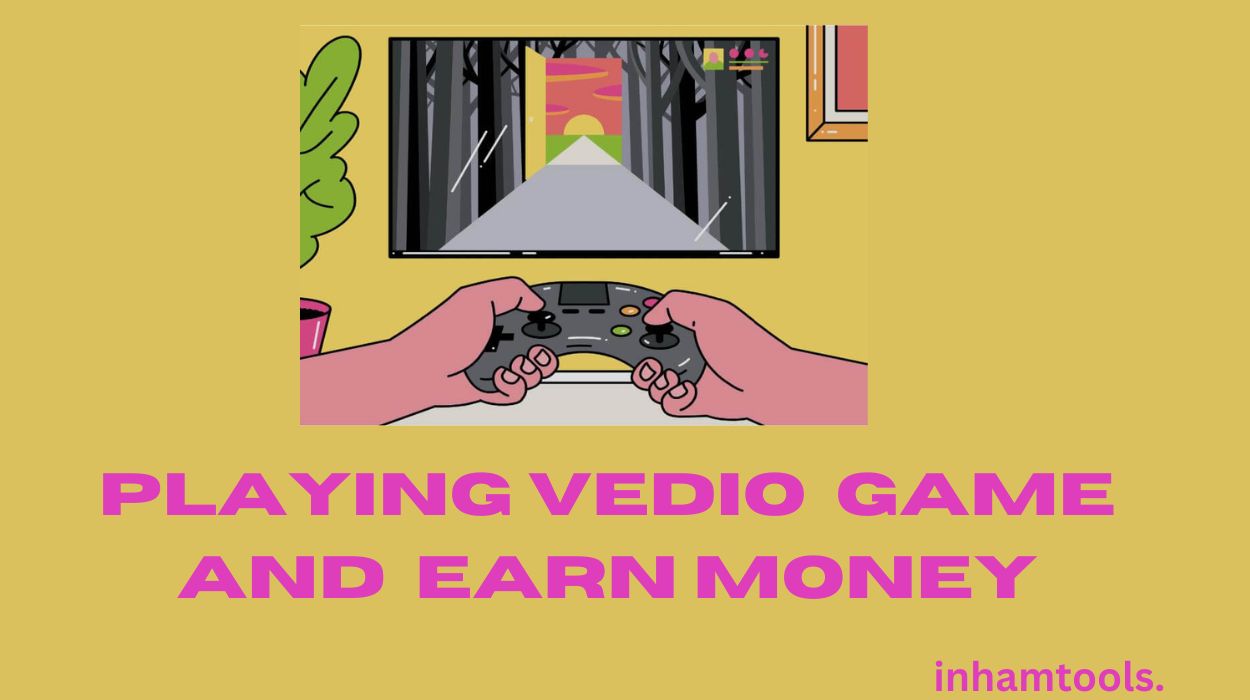Introduction
What is a Gaming Economy and Why Is It Important?
A setting up a healthy gaming economy is the system within a video game where players earn, spend, trade, and manage resources like in-game currency, items, or points. Just like real-world economies, these systems need balance to keep players engaged and make the game fun. A well-made gaming economy encourages players to keep playing, compete, and enjoy their time without feeling frustrated or bored.
What Is a Balanced and Healthy Gaming Economy?
A balanced and healthy gaming economy means that the game offers fair opportunities for all players to earn and use resources. This means rewards match the difficulty of tasks, players don’t feel pressured to spend real money to succeed, and no one strategy or player becomes too powerful. This type of economy helps make sure the game stays fun and fair for everyone over time.

Core Principles of a Balanced Gaming Economy
Fair Resource Distribution
Fair resource distribution means that all players have an equal chance to earn resources, like in-game money or items, by playing the game. Rewards should match the time and effort players put into the game. This helps make sure that both new and experienced players enjoy the game without feeling like they need to spend real money just to keep up.
Sustainable Growth Mechanisms
Sustainable growth mechanisms keep the game economy running smoothly over time. This means there should be a balance between how players earn resources and how they spend them. If players can get too many rewards too quickly, the game might become too easy and boring. If earning rewards is too hard, players might get frustrated and stop playing. A good balance keeps players engaged and motivated.
Player-Driven Market Dynamics
A player-driven market means that players can buy, sell, or trade items with each other. This makes the game more interesting because players can make decisions that affect the economy. For example, if many players want a rare item, its value goes up. If too many players have it, the value goes down. This helps create a fun and interactive game experience where players feel like their actions matter.
Key Components of a Healthy Gaming Economy
Currencies and Their Roles: Primary vs. Secondary Currency Systems
A balanced game often has two types of currency. The primary currency is easy to earn and used for basic actions, like buying common items or upgrades. The secondary currency is more rare and used for special features, premium items, or significant boosts. Having these two types helps create balance by making the game engaging for all players and giving optional advantages to those who want them.

Reward Systems and Incentives: Keeping Players Motivated Without Overinflating the Economy
A good game rewards players for their efforts without giving too much too quickly. Consistent, fair rewards keep players motivated and excited to play. This avoids problems like inflation, where rewards lose value because too much is given out. Proper incentives make the game feel rewarding but keep it balanced over time.
In-Game Marketplaces: Ensuring Stability in Trading and Pricing
If a game has a marketplace where players can trade or sell items, it needs rules to keep things fair. A stable market means that prices for items do not swing wildly up and down, which helps players plan and make better choices. Game developers should keep an eye on these markets to prevent issues like price inflation or unfair trading, making sure the economy stays stable and fun for everyone.
Design Strategies for Maintaining Balance
Avoiding Inflation and Deflation: Managing the In-Game Money Supply In-game economies need to avoid having too much or too little money in circulation. If there is too much money, players can easily buy everything, which leads to inflation and lowers the value of items. If there is too little, players struggle to buy anything, causing deflation. By controlling how much money enters and leaves the game, developers keep the economy stable and fun for everyone.
Monitoring and Adjusting Rewards: Keeping Challenges Balanced with Rewards Rewards should match the difficulty of tasks and challenges in the game. If rewards are too generous, the game can become unbalanced, making it too easy for players to progress without effort. On the other hand, if rewards are too small, players may feel frustrated. Developers need to check the balance regularly and adjust rewards to ensure players stay motivated and the economy remains fair.
Player Feedback and Iteration: Using Community Insights to Fine-Tune the Economy Listening to player feedback is important for a balanced game economy. Players often notice issues or have suggestions that developers might not see. By collecting feedback and making updates based on it, developers can improve the economy and make it better for everyone. This process of getting input and updating the game helps keep it enjoyable and engaging over time.
Common Pitfalls to Avoid
Overpowered Monetization: How Excessive Microtransactions Can Disrupt Balance
When games have too many microtransactions, it can upset the balance of the game. If players feel they need to spend money to progress or win, it can lead to frustration and make the game feel unfair. To keep the game fun for everyone, it’s important to use microtransactions in a way that adds value without giving paying players an unfair advantage.
Pay-to-Win Structures: Maintaining Fairness for All Types of Players
A pay-to-win system allows players who spend money to gain major advantages over those who don’t. This can make the game less enjoyable for players who want to play for free or who don’t want to spend much. Ensuring that all players, whether they pay or not, have a fair chance at winning or progressing helps keep the game balanced and fun for everyone.
Resource Hoarding: Preventing Strategies That Monopolize Game Resources
Sometimes, players find ways to gather and keep most of the game’s resources for themselves. This can make it harder for other players to compete or enjoy the game. To prevent this, developers need to design the game so that resources are distributed fairly and no single player or group can take control of them all. This keeps the gameplay balanced and enjoyable for everyone.
Tools and Metrics for Monitoring Economic Health
Using Analytics to Track and Adjust the Economy
Game developers use special tools called analytics to monitor how players are interacting with the in-game economy. These tools track things like how much currency players are earning, spending, and trading. By gathering this data, developers can see if the economy is healthy or if there are problems, such as too many players earning too much money too quickly or not enough players spending money. This helps developers adjust the game’s economy in real time, making sure it stays balanced and fair.
Important KPIs (Key Performance Indicators) to Watch for Economic Balance
Key Performance Indicators (KPIs) are specific numbers that tell developers how well the in-game economy is working. Here are some important KPIs to keep an eye on:
- Currency Flow: How much in-game money is being earned and spent. If too much money is being generated, it can lead to inflation, while too little can cause deflation.
- Player Retention: How often players return to the game. If players stop coming back, it may mean the economy isn’t engaging or rewarding enough.
- Average Spend per Player: This measures how much money players are spending in the game. If spending is too high or too low, it can signal issues with the game’s pricing system or reward structure.
- Transaction Volume: The number of transactions happening in the game. If the volume is too low, it may mean the in-game economy isn’t engaging or too many items are overpriced.
- Resource Distribution: How resources are spread out among players. If only a few players control most of the resources, the game can become unbalanced. Monitoring this helps ensure fairness in gameplay.

Tips for Players to Navigate and Thrive in Balanced Gaming Economies
- Understand the Currency System: Learn how the in-game currency works and spend wisely. Save resources for important upgrades and avoid unnecessary purchases.
- Join Events and Challenges: Participate in time-limited events to earn extra rewards and resources without spending too much time or money.
- Invest in Long-Term Progress: Focus on upgrades or items that benefit you over time instead of spending resources quickly.
- Trade Smartly in Marketplaces: Watch for deals in in-game marketplaces and sell unused items to earn extra currency.
- Avoid “Pay-to-Win” Traps: Don’t rely on real-money purchases. Earn rewards through gameplay and improve through skill.
- Learn from the Community: Use online resources like guides and forums to get tips and strategies to succeed.
- Stay Flexible: Adapt to changes in the game economy, such as updates or new currency systems, to make smart decisions.
FAQs
What is a gaming economy?
A gaming economy refers to the system within a game where virtual goods, currencies, and resources are exchanged, traded, or used by players. It functions similarly to real-world economies but operates within the game’s virtual world.
Why is a balanced gaming economy important?
A balanced economy ensures fairness and fun for all players. It prevents inflation or deflation, maintains the value of in-game currencies, and makes sure that rewards and challenges are appropriately balanced, leading to a more enjoyable gaming experience.
How do developers maintain a healthy in-game economy?
Developers can maintain a healthy economy by monitoring the in-game currency supply, adjusting rewards, tracking player behavior, and using analytics to identify areas needing improvement. Regular updates and player feedback help fine-tune the system.
What are microtransactions, and how can they affect the game’s economy?
Microtransactions are small in-game purchases that players can make, usually for cosmetic items or in-game advantages. If overused or mismanaged, they can disrupt balance, leading to pay-to-win scenarios or excessive monetization that harms player experience.
What are in-game currencies, and how do they function?
In-game currencies are virtual money used to buy items, upgrade characters, or trade within the game. Some games have primary currencies for core transactions and secondary currencies for special rewards or purchases, helping to control spending and maintain balance.
Conclusion
In conclusion,setting up a healthy gaming economy is crucial for creating a fair, engaging, and enjoyable experience for players. When resources are managed well, rewards are meaningful, and no unfair advantages exist, players stay motivated and invested in the game. Developers should prioritize the player experience, as a well-balanced economy not only enhances enjoyment but also ensures long-term success and player loyalty. By focusing on fairness and thoughtful game design, developers can build a strong, thriving community and a sustainable gaming environment.
setting up a healthy gaming economy setting up a healthy gaming economy setting up a healthy gaming economy setting up a healthy gaming economy setting up a healthy gaming economy setting up a healthy gaming economy setting up a healthy gaming economy setting up a healthy gaming economy setting up a healthy gaming economy setting up a healthy gaming economy setting up a healthy gaming economy setting up a healthy gaming economy setting up a healthy gaming economy setting up a healthy gaming economy setting up a healthy gaming economy setting up a healthy gaming economy</div hidden>







